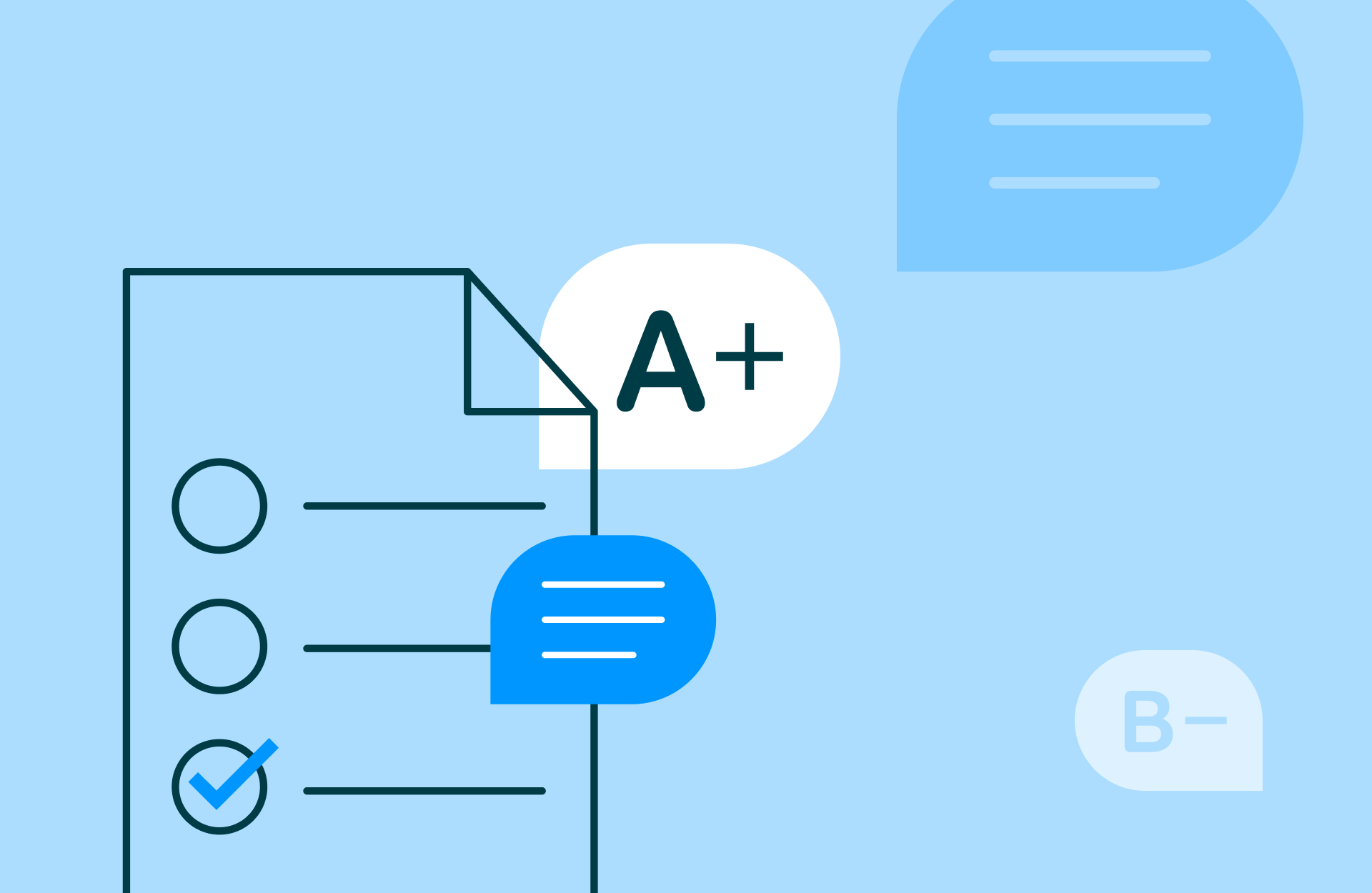Assessment and grading are words that are often used interchangeably—and understandably so, since they are closely related. As a result, many equate assessment with grading.
However, assessment and grading differ, starting with their goals.
The goal of grading is to evaluate individual student performance against a set of criteria for a given unit or course. Grades may or may not be an accurate measure of student learning, depending on what is being evaluated. For example, attendance, on-time assignment submission, formatting, and participation may not reveal a lot about how much a student has learned, but they can offer indicators or signals for instructor intervention.
Grades alone, while useful as a standardized measurement, don’t provide enough personalized feedback for what a student does or does not know and what they need to do to further their learning. According to Thomas Guskey, when grades are used alone, “even accurate, task-involving grades don’t lead to improved student learning. Students get no direction for improvement from a letter, number, word, phrase, or symbol attached to evidence of their learning. Only when grades are paired with individualized comments that offer guidance and direction for improvement do they enhance achievement and foster learning progress” (Guskey, 2019).
The goal of assessment, on the other hand, is more expansive—because it is not solely about grading and includes low-stakes formative assessments void of summative evaluations—it can further student learning by including feedback and guiding students towards next steps in learning. Assessment includes low-stakes, frequent assignments that educators give students in class or as homework, in addition to summative tests or exams. Qualitative feedback is also a component of assessment that operates as a checkpoint in the student learning journey.
Assessment does not always include grades, but grading is always a part of assessment.
Therefore, grading is a subset of assessment.
Why is this important?
Assessments are not just tests, but also low-stakes assignments and daily check-ins. They uncover more data about student learning than grades. While grades may communicate student progress in general or serve as warning indicators, assessment can identify specific learning gaps that may require teacher intervention. Grades alone don’t reveal this level of granularity.
Assessment is a critical part of teaching and learning, providing cohort-based and individual-level data insights to educators. Are students learning what we are teaching? Is there a way to increase teaching efficacy to foster better student learning outcomes? In other words, are the goals of education being met?
The above questions can be answered via assessment, which provide the following:
- Diagnostic feedback about what students do and do not know,
- Information as to what demonstrates deep comprehension of the subject,
- An opportunity to encourage student learning,
- And teacher self evaluation on what is and is not working and next steps to bridge student learning gaps.
It’s easy to see how assessment and grading are often interchanged, given their close pedagogical juxtaposition. Both grading and assessment are necessary; grading to communicate in a succinct manner student progress to inform placement and other institutions, and assessment to gain deep insights into this progress. But it’s also important to understand and acknowledge the differences as we help students navigate the educational journey.





